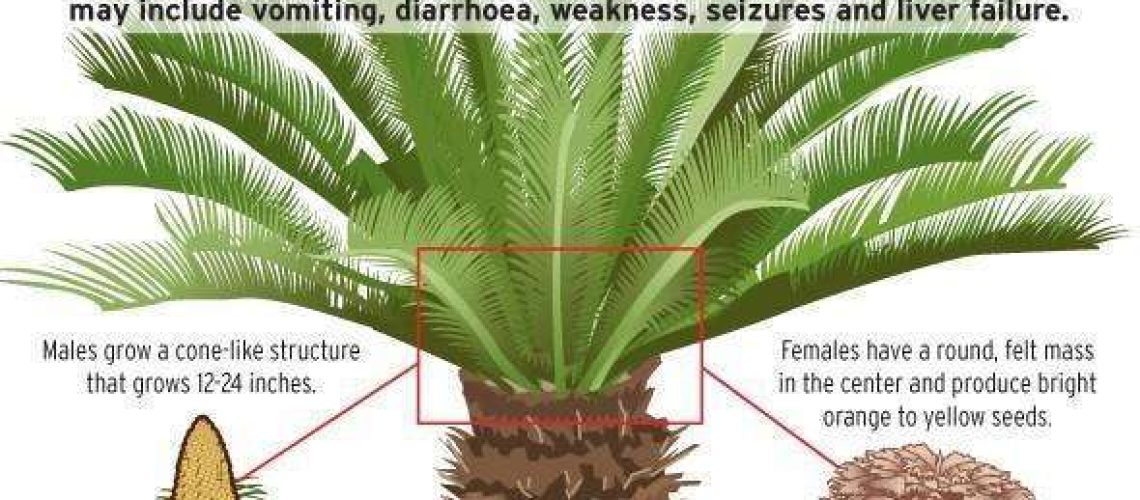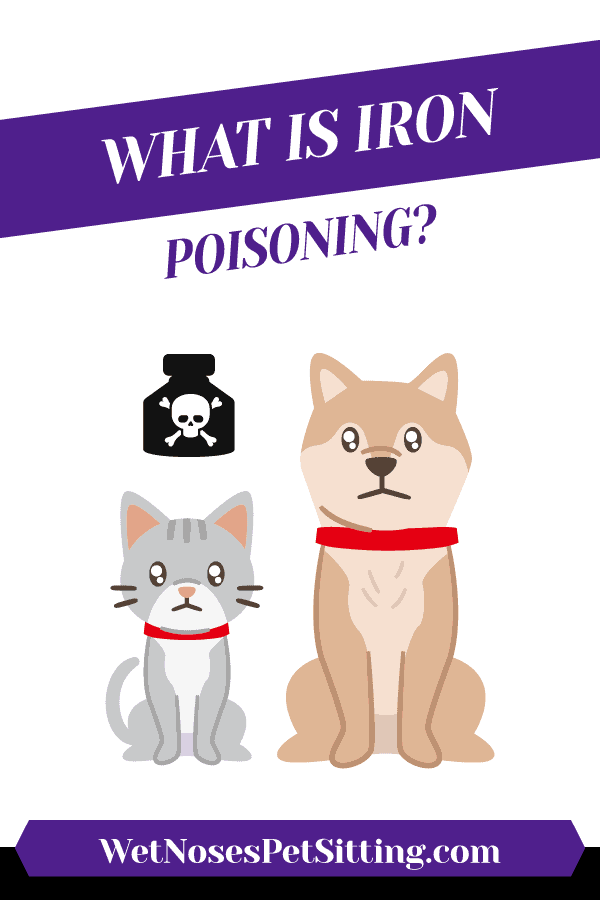Key Takeaways:
- Sago palms are highly toxic to dogs and can cause severe health issues or even death if ingested.
- The entire plant, including the leaves, stems, and seeds of the sago palm, contains toxins called cycasin and cycad which are harmful to dogs.
- Common symptoms of sago palm toxicity in dogs include vomiting, diarrhea, loss of appetite, seizures, liver failure, and even coma.
- If you suspect your dog has ingested any part of a sago palm, it is crucial to seek immediate veterinary attention as there is no specific antidote for sago palm poisoning.
- Prevention is key - keep sago palms out of reach from dogs and educate yourself about other potentially toxic plants in your surroundings to ensure your pet's safety.
Are you a dog lover who wants to keep your furry friend safe and healthy? Then understanding the dangers of sago palm toxicity in dogs is essential. Did you know that sago palms are one of the most common toxic plants for dogs?
Understanding Sago Palm toxicity in dogs
Dogs are curious creatures who often explore their surroundings with their mouths. While this curiosity is endearing, it can also lead to dangerous situations, like ingesting toxic plants such as Sago Palms. Sago Palms are popular ornamental plants found in many homes and gardens, but they contain toxins that can be extremely harmful to dogs if ingested.
The primary toxin found in Sago Palms is cycasin, which affects the liver and can cause severe damage. Even small amounts of the plant can be toxic to dogs, and if left untreated, it can be fatal. It's crucial for dog owners to be aware of the dangers posed by Sago Palms and take necessary precautions to keep their furry friends safe.
The dangers of Sago Palms for your furry friend
Sago Palm toxicity can have devastating effects on dogs. The cycasin toxin primarily affects the liver, leading to liver failure if not treated promptly. Dogs that ingest even a small amount of the plant may experience symptoms such as vomiting, diarrhea, loss of appetite, lethargy, abdominal pain, jaundice (yellowing of the skin and eyes), and seizures.
In severe cases of Sago Palm poisoning, dogs may develop coagulopathy (blood clotting disorder) or go into shock. Without immediate veterinary intervention, these complications can be life-threatening. Therefore, it is essential for dog owners to recognize the signs of Sago Palm poisoning and seek veterinary care without delay.
Recognizing signs of Sago Palm poisoning in dogs
- Vomiting
- Diarrhea
- Loss of appetite
- Lethargy
- Abdominal pain
- Jaundice (yellowing of the skin and eyes)
- Seizures
If you notice any of these symptoms in your dog, it is crucial to contact your veterinarian immediately. Time is of the essence when dealing with Sago Palm toxicity, and early intervention can significantly improve your dog's chances of recovery.
Can dogs recover from Sago Palm toxicity with treatment?
With prompt and appropriate veterinary care, some dogs can recover from Sago Palm toxicity. The specific treatment will depend on the severity of the poisoning and may include inducing vomiting to remove any remaining plant material from the stomach, administering activated charcoal to absorb toxins, providing supportive care such as intravenous fluids and medications to protect the liver, and monitoring blood work closely.
However, it's important to note that not all cases of Sago Palm poisoning have a positive outcome. In severe cases where there is significant liver damage or other complications, the prognosis may be poor. This highlights the importance of prevention and avoiding exposure to Sago Palms altogether.
Preventing Sago Palm poisoning in dogs: Tips for dog owners
- Avoid having Sago Palms in your home or garden if you have a dog.
- If you already have Sago Palms, consider removing them or placing them in an area inaccessible to your dog.
- Be vigilant during walks or visits to parks where Sago Palms may be present. Keep your dog on a leash and prevent them from sniffing or eating plants they encounter.
- Educate yourself about toxic plants that are dangerous for dogs and ensure your surroundings are safe for your furry friend.
- If you suspect your dog has ingested any part of a Sago Palm, contact your veterinarian immediately, even if no symptoms are present.
The importance of immediate veterinary care for suspected Sago Palm ingestion
If you suspect that your dog has ingested any part of a Sago Palm, it is crucial to seek immediate veterinary care. Time is of the essence when dealing with Sago Palm toxicity, and early intervention can make a significant difference in your dog's chances of survival.
Remember, dogs are curious creatures who may not understand what is safe for them to eat. As responsible pet owners, it is our duty to create a safe environment for our furry friends and be aware of potential dangers such as toxic plants like Sago Palms.
Can dogs recover from Sago Palm toxicity with treatment?
The importance of immediate veterinary care
When a dog ingests any part of the Sago Palm, it is crucial to seek immediate veterinary care. The toxins present in this plant can cause severe damage to a dog's liver and other vital organs. Without prompt treatment, the chances of recovery are significantly reduced. Veterinarians will perform various diagnostic tests to assess the extent of the toxicity and provide appropriate treatment.
Treatment options for Sago Palm toxicity
Once at the veterinary clinic, the veterinarian may induce vomiting to remove any remaining plant material from the dog's stomach. They may also administer activated charcoal to help absorb any toxins still present in the digestive system. In some cases, hospitalization may be necessary for supportive care, including intravenous fluids and medications to protect and support the liver.
Prognosis and long-term effects
The prognosis for dogs affected by Sago Palm toxicity depends on several factors, including how quickly they receive treatment and the severity of their symptoms. Dogs that receive prompt veterinary care have a better chance of survival. However, even with treatment, some dogs may experience long-term effects on their liver function or other organs. Regular follow-up visits with a veterinarian are essential to monitor their progress and ensure early detection of any complications.
Preventing Sago Palm poisoning in dogs: Tips for dog owners
Identifying Sago Palms
To prevent Sago Palm poisoning in dogs, it is crucial for dog owners to be able to identify these plants accurately. Sago Palms have feathery leaves arranged in a circular pattern at the top of a thick trunk-like stem. They often resemble small palm trees but are not true palms.
Keep your dog away from Sago Palms
The best way to prevent Sago Palm poisoning is to keep your dog away from these plants. If you have Sago Palms in your yard, ensure they are securely fenced off or placed in an area inaccessible to your dog. Dogs are naturally curious and may be attracted to the plant's texture and smell, so it's crucial to supervise them when outdoors.
Alternatives to Sago Palms
If you want to add greenery to your yard but are concerned about Sago Palm toxicity, there are plenty of safe alternatives. Consider planting dog-friendly plants such as Boston Ferns, Spider Plants, or Areca Palms. These plants can provide a lush and attractive environment without posing a risk to your furry friend.
The importance of immediate veterinary care for suspected Sago Palm ingestion
Recognizing the symptoms
If you suspect that your dog has ingested any part of a Sago Palm, it is crucial not to wait for symptoms to appear before seeking veterinary care. Some common symptoms of Sago Palm toxicity include vomiting, diarrhea, loss of appetite, weakness, seizures, and jaundice (yellowing of the skin and eyes).
Why immediate veterinary care is necessary
Immediate veterinary care is vital because the toxins present in Sago Palms can quickly cause severe damage to a dog's organs. Time is of the essence when it comes to treating this type of poisoning. The sooner a veterinarian can intervene with appropriate treatment measures, the better chance your dog has at recovering.
Don't induce vomiting without professional guidance
While inducing vomiting may be necessary in some cases of Sago Palm ingestion, it should only be done under professional guidance. Inappropriate methods or timing can lead to further complications or aspiration pneumonia if vomit enters the lungs. It is always best to consult a veterinarian before attempting any home remedies.
In conclusion, it is important to keep sago palms away from dogs as they can be highly toxic. Eating any part of the plant can lead to serious health problems and even death in dogs. It is best to be cautious and avoid having sago palms in areas accessible to our furry friends.
What happens if a dog eats a sago palm?
The Sago palm has a toxic substance called cycasin, which can irritate the digestive system and lead to symptoms like vomiting, diarrhea, and sadness. If a dog doesn't receive proper treatment, it may also experience neurological issues like difficulty with coordination and seizures, as well as liver failure.
Can a dog survive after eating a sago palm?
Consuming any part of the sago palm can be deadly, and dogs have a higher chance of survival if they are promptly taken to a vet. However, even with treatment, only half of the dogs that are poisoned by the sago palm are able to survive.
How much sago palm is toxic to dogs?
Every part of the sago palm is toxic, but the seeds are the most poisonous to pets and are more accessible for them to consume compared to the thorny leaves. Even a small ingestion of the plant can have severe consequences.
How do I keep my dog off my sago palm?
To avoid any potential dangers, it is advised not to have sago palms if you own dogs. Although they are aesthetically pleasing, the potential risks outweigh their ornamental value.
Can a dog survive cycad poisoning?
If a patient seeks medical help soon after ingesting cycad, their prognosis is positive. However, if the patient is already showing symptoms, the prognosis becomes uncertain. The mortality rate for dogs showing symptoms is reported to be 32.1%.
What are the symptoms of cycad poisoning in dogs?
Symptoms of poisoning include stomach pain, throwing up, diarrhea, sleepiness, weakness, unconsciousness, seizures, and liver failure. Although there is no specific remedy for poisoning from cycad, it is crucial to seek immediate veterinary evaluation as it can be life-saving.

















